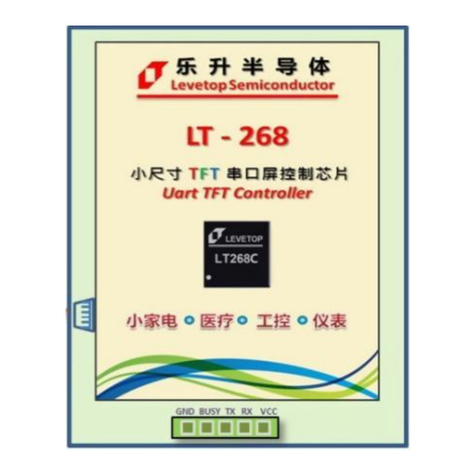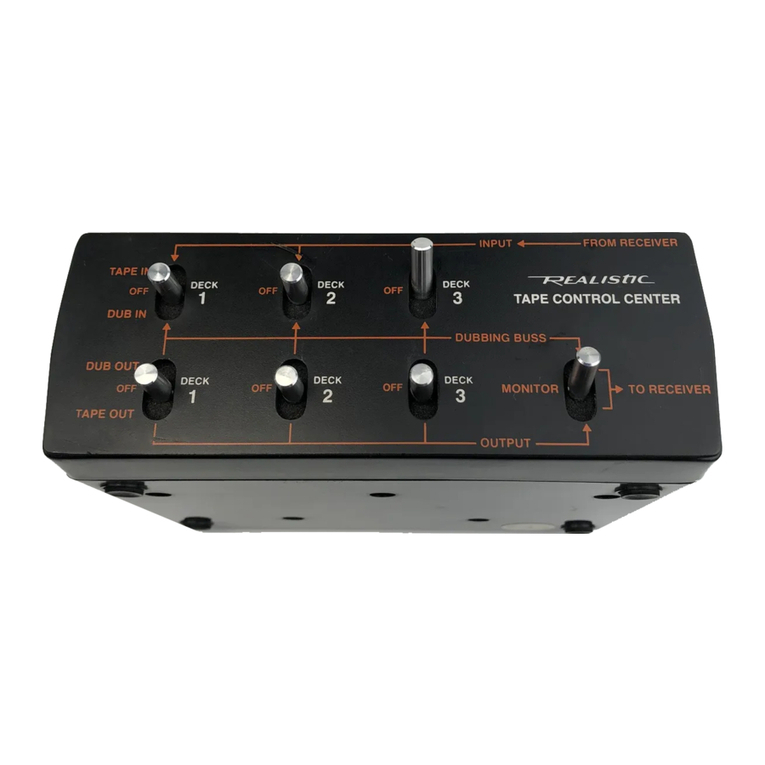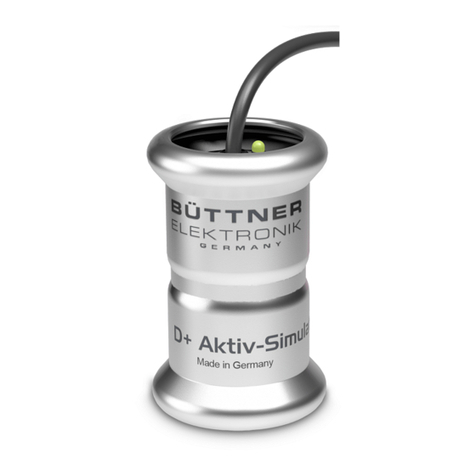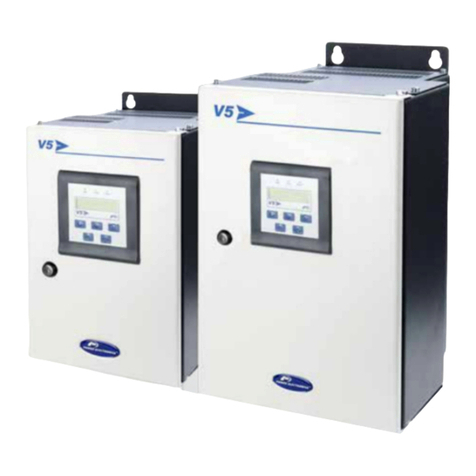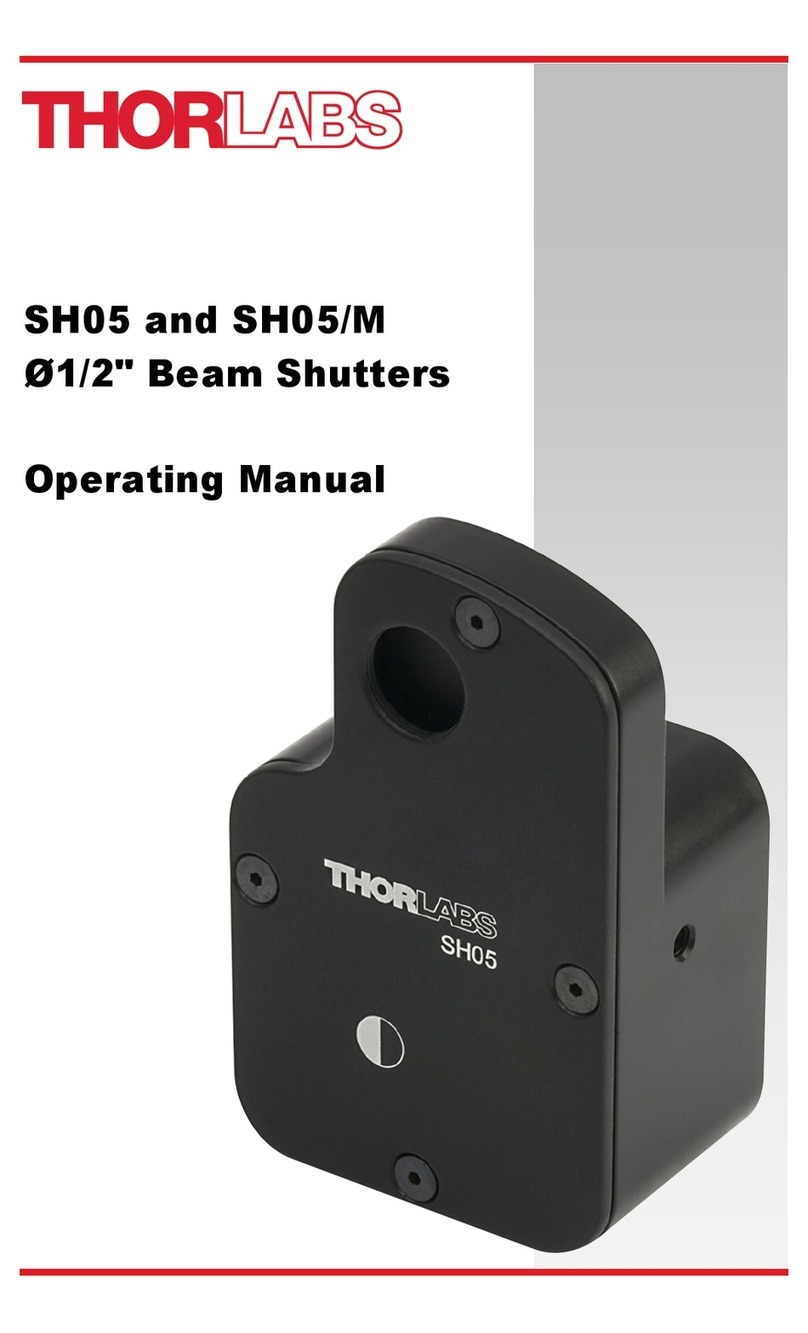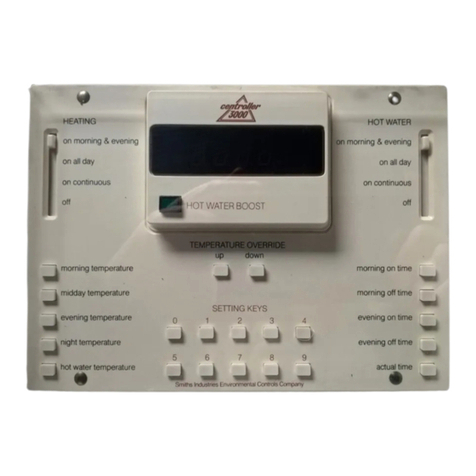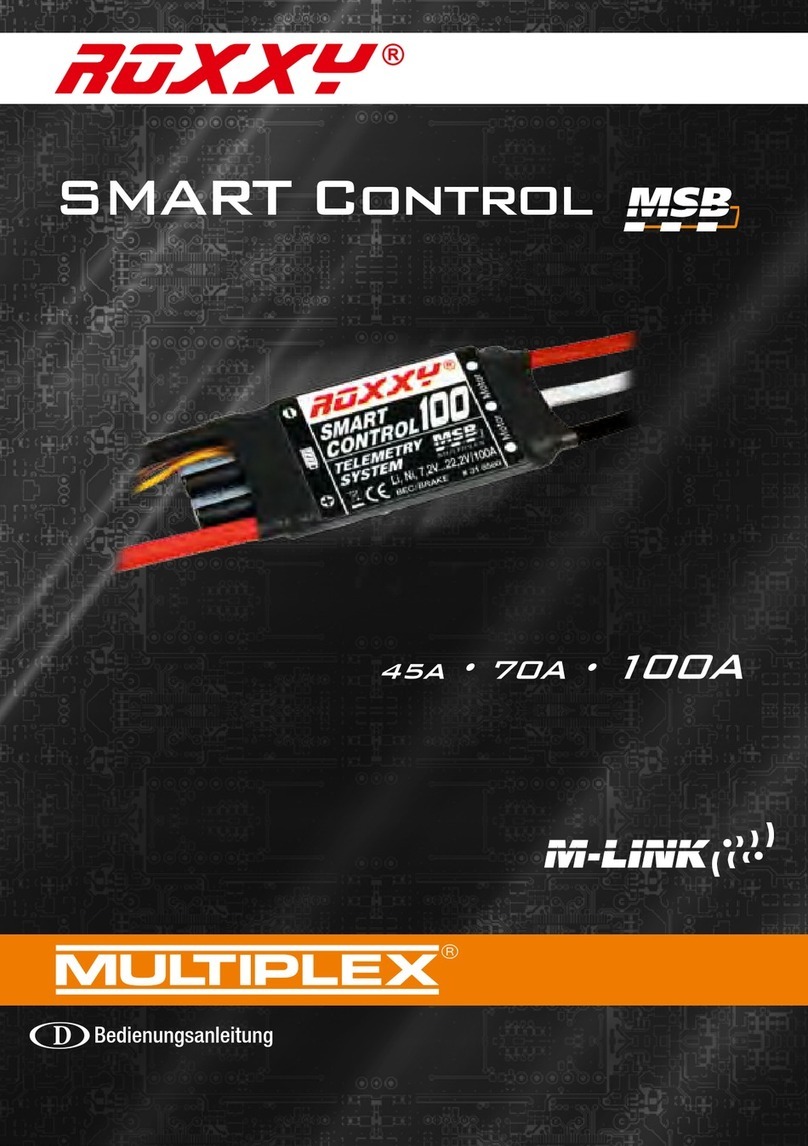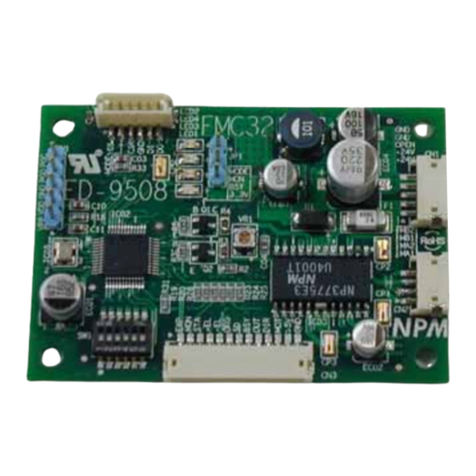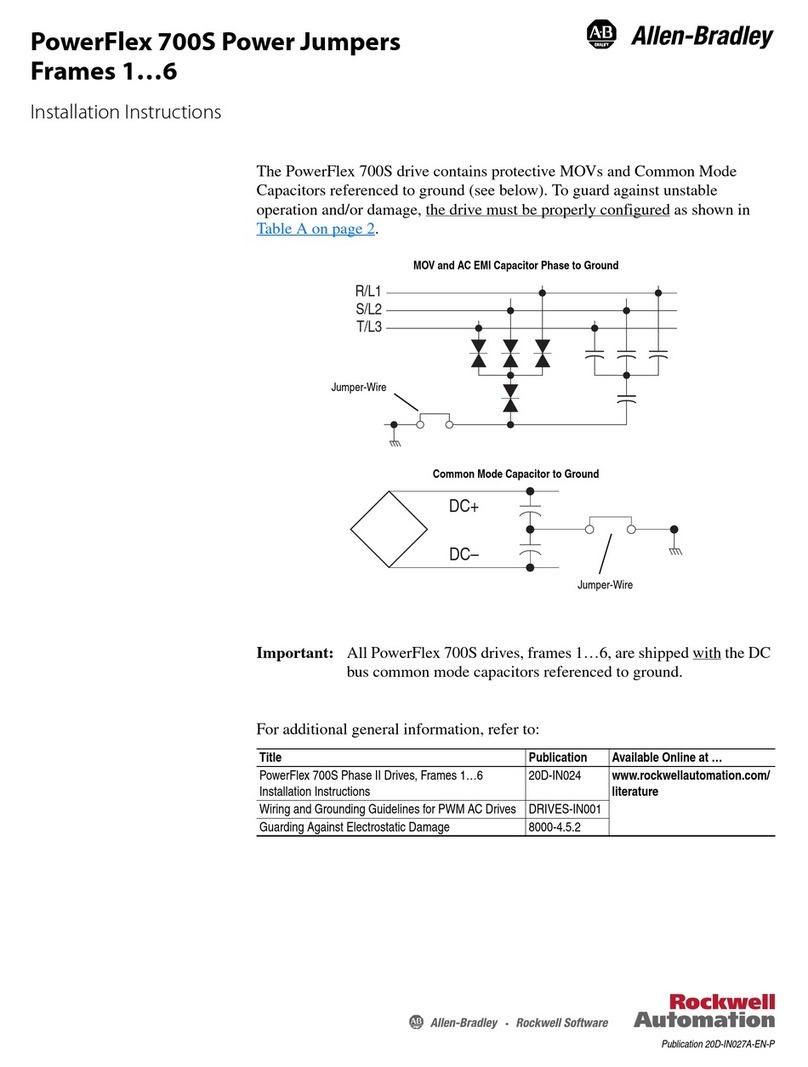A+ Corporation Sampling Experts Genie GHR User manual

SCC-GHR-MASTER 111319
Contact us for expert product application assistance.
1.225.644.5255 |genielters.com
sales@genielters.com
A+ Corporation
41041 Black Bayou Road
Gonzales, Louisiana 70737 United States
Leading the industry in Analytically Correct™ Sampling Systems, Components, and Technology. By applying sound
principles of science and a minimalistic design approach, we manufacture our products to solve your specific sampling
needs. We specialize in Analytically Correct Sample System Design, Sample Conditioning Components, and revolutionary
gas and liquid sampling technology. We are The Sampling Experts™. ISO 9001:2015 certied
Genie®, GHR™, are trademarks or registered trademarks of A+Corporation, LLC. All other referenced trademarks are the property of their respective
owners. © 2012 A+ Corporation. All rights reserved.
PRODUCT MANUAL: GHR-CSA
Overview
Installation & Operation
901-GR Instructions
GHR Instructions
INTERTECTM 24
INTERTECTM 110
Maintenance
Instructions
9 01-GR
GHR
scan for mobile

B-1
PRODUCT MANUAL
SCC-GHR-MASTER 111319
Contact us for expert product application assistance.
1.225.644.5255
sales@genielters.com
genielters.com
41041 Black Bayou Road
Gonzales, Louisiana 70737 United States
Leading the industry in Analytically Correct™ Sampling Systems, Components, and Technology.
By applying sound principles of science and a minimalistic design approach, we manufacture
our products to solve your specific sampling needs. We specialize in Analytically Correct
Sample System Design, Sample Conditioning Components, and revolutionary gas and liquid
sampling technology. We are The Sampling Experts™. ISO 9001:2015 certied
Genie®, GHR™, are trademarks or registered trademarks of A+Corporation, LLC. All other referenced trademarks are the property of their respective
owners. © 2012 A+ Corporation. All rights reserved.
OVERVIEW
Introduction
• This manual is intended to be used as a basic installation, operation, and maintenance guide for this product and should be left with the end user for future
reference. It has been carefully checked for accuracy.
• Proper installation is the responsibility of the installer. Product failure due to improper installation is not covered under the warranty. If you receive a damaged
product, please contact your distributor immediately.
• Installation of this product is of a mechanical nature. The installer and operator should understand how to use tube fittings and be trained in installing this type
of equipment.
Technical Specifications
The specifications listed in this section are generalized for this product. Please note that specifications may vary depending on the customizations of your
equipment.
Technical Specifications
Machined parts: 316/316L stainless steel / NACE compliant
All other metal parts: stainless steel / NACE compliant
Regulator seat material: PFA
Seals: User defined
6000 psig (413.7 barg) per criteria of ANSI/ASME B31.3
Wetted materials
Maximum pressure rating
0-10 psig (0-0.7 barg), 0-25 psig (0-1.7 barg), 0-50 psig (0-3.4 barg),
0-100 psig (0-6.9 barg), 0-250 psig (0-17.2 barg), 0-500 psig (34.5 barg)
Outlet pressure range
1/4” FNPTPort sizes
0.023Cv Coefficient
*Ambient:
GHR (CSA): -40 to 300°F (-40 to 149°C) 901-GR: 0 to 145°F (-18 to 63°C)
GHR (ATEX): -40 to 140°F (-40 to 60°C)
*Process (all models):
-40°F to 300°F (-40°F to 149°C)
901-GR controller: 95 to 300°F (35 to 149°C) set at 300°F (149°C);
backup thermal cutoff opens at 338°F (170°C)
Temperature range
* Actual limit depends on sealing
material chosen.
Refer to Temperature Range
Comparison Chart.
~10 SLM - Standard Liters per Minute (consider heat transfer limitations)Maximum flow rate
Conduit (CSA): GHR: 1/2” FNPT 901-GR: 3/4” FNPT
Cable OD (ATEX/IECEx): 3/8” (10mm)
Electrical connection
GHR: 80W @110/220 VAC or 25W @ 24 VDC
901-GR: 200 W @ 110 VAC or 700 W @ 240 VAC
Power requirements
CSA Certified Assembly: File # 235756; Class 1, Division 1, Groups B, C, & D; T3
ATEX/IECEx Heater Block (Model GHR only): II2G Ex db IIC T3
Electrical approval

B-2
PRODUCT MANUALOVERVIEW
Product Dimensions
Model Numbering & Additional Part Numbers
How to build the model number:
Outlet pressure range (psig)
Power requirements
Sealing material 0 = Fluoroelastomer JW = RGD resistant HNBR (other materials available upon request)
0 = 0-25 1 = 0-50 2 = 0-100 3 = 0-250 4 = 0-500 9 = 0-10
SS P4 GHR
Sealing material
Outlet pressure range
Power requirements
Electrical approval
How to build the heater block replacement model number:
5
Power requirements
Electrical approval
1= AC power 2 = DC power (not available in Model 901-GR)
Electrical approval
C = CSA A = ATEX/IECEx (not available in Model 901-GR)
Spare Parts & Accessories (sold separately)
Kozy™ Insulated Cover - Part # KZ-10-L (not for enclosures)
901 Heater Base & Controller Replacement - Part # 901-01-SS
Manifold with pressure gauge, ball valve, & relief valve - for ordering information,
refer to the Genie Probe Regulator Accessory Manifold product sheet
Inlet filter replacement - Part # GHR-5FSS
Seat & Seal replacement kit - Seat, Valve Stem, Bias Spring & O-Rings
Model GHR = GR with self-limiting block heater 901-GR = GR with temperature controller
Your model number is determined by your specific needs. Materials of construction must be compatible with process fluid.
Model
Top ViewSide View
GHR
901-GR
2.2”
4.1”
7.2”
2.4”
INLET PORT
CONDUIT
CONNECTION
1.9” 2.4”
3.5”
2.5”
MOUNTING
HOLES
FOR 1/4”-20
SCREWS
2.5”
3.1”
3.8”
ADJUSTMENT
SCREW
OUTLET PORT
7.1“
7.1
1.6
“
“
5.6
12.7
5.8
“
“
“
2.5
14
14
34
“
TEMPERATURE
CONTROLLER
4.8
“
“
“
“
CONDUIT
CONNECTION NPT
OUTLET PORT
NPT
INLET PORT


C-1
PRODUCT MANUAL
SCC-GHR-MASTER 011619
Contact us for expert product application assistance.
1.225.644.5255
sales@genielters.com
genielters.com
41041 Black Bayou Road
Gonzales, Louisiana 70737 United States
Leading the industry in Analytically Correct™ Sampling Systems, Components, and Technology.
By applying sound principles of science and a minimalistic design approach, we manufacture
our products to solve your specific sampling needs. We specialize in Analytically Correct
Sample System Design, Sample Conditioning Components, and revolutionary gas and liquid
sampling technology. We are The Sampling Experts™. ISO 9001:2015 certied
Genie®, GHR™, are trademarks or registered trademarks of A+Corporation, LLC. All other referenced trademarks are the property of their respective
owners. © 2012 A+ Corporation. All rights reserved.
INSTALLATION AND OPERATION
Safety Warnings
The images below will be used to alert you to various types of safety messages. Obey all safety messages that follow this symbol to avoid possible injury/death or
equipment damage.
WARNING messages will appear before procedures that could result in serious personal injury or death.
CAUTION messages will appear before procedures that could result in minor or moderate injury.
NOTICE messages will appear before procedures that could result in damage to equipment.
WARNING: Read this manual completely and carefully before installing or using this product. Failure to do so can result in serious injury or death.
Save these instructions for future reference and for the local inspector’s use. Observe all governing codes and ordinances.
General
• Improper selection/installation/maintenance, misuse, or abuse of this equipment can cause death, serious injury, and property damage.
• Do not exceed ANY equipment pressure ratings. Refer to the technical specifications table for maximum pressure rating of the system. Verify the designed
pressure ratings of all equipment in your system (supply lines, fittings, connections, filters, valves, gauges, etc.). Prior to use in a system, a properly-sized relief
device is to be installed, which limits the use of 110% of the MAWP.
• Some fluids, when burning, do not exhibit a visible flame. Use extreme caution when inspecting and/or servicing systems using flammable fluids to avoid death
or serious injury to personnel. Provide a device to warn personnel of these dangerous conditions.
• Not designed for external fire or for use with mixtures of an explosive gas and air/oxygen.
• Do not use the regulator as a shut-off device. A ball valve on the outlet is recommended for this purpose. Our Genie Regulator Accessory Manifold™ is
designed to thread directly into any Genie Probe Regulator™ or Genie Regulator and provides a means to monitor regulator outlet pressure and block flow.
901-GR Electrical
WARNING: Electrical power must be “OFF” before and during installation and maintenance or personal injury may result.
• All appropriate national, state, and electrical codes must be followed.
• Do not remove the temperature controller from the instrument enclosure; the wires may disconnect from the controller terminals.
• To adjust the set temperature of the heated regulator, remove the instrument enclosure cover and use the arrow keys to adjust the set temperature. This
must be done in a non-hazardous location prior to installation. Note: the range of adjustment is 95°F to 300°F.
• When installed in a hazardous location, the instrument enclosure cover should NOT be removed unless power to the regulator is de-energized prior to
maintenance.
• Do not exceed 5 minutes with power without fluid flow or the thermal cut-off will open the circuit.
• A sealing fitting must be installed with access, allowing the dams to be made and the sealing compound to be properly poured.
• All unused conduit openings must be plugged. Plugs must be a minimum of 1/8” thick and engage in a minimum of 5 full threads.
GHR Electrical
WARNING: Electrical power must be “OFF” before and during installation and maintenance or personal injury may result.
• All appropriate national, state, and electrical codes must be followed. In Europe, EN 60079-14 latest applicable edition should be followed.
• The power supply is with the help of a silicone cable, notch and oil resistant. The cable is intended for installation inside a rigid metal conduit, cable tray
or a similar method which provides sufficient mechanical strength to the cable against stress and bending. Ground to be provided at the final location of
installation.
BEFORE YOU START
901-GRGHR
scan for mobile

C-2
PRODUCT MANUALINSTALLATION AND OPERATION
Required Tools and Materials
• Gloves
• (2) 1/4” screws
• Screwdriver
• 3/8” allen wrench for setting outlet pressure
• Crescent wrench for general purpose
901-GR Installation and Operation Notes
NOTICE: Do not install the regulator in an enclosure that is heated above the regulator’s maximum ambient temperature.
• The regulator should be installed in a KOZY™ insulated jacket, ACES™ enclosure, or similar type of insulating device.
• Valve off sample flow prior to regulator installation.
1.
2.
Mount
1. The regulator can be mounted in any position, preferably with the heater at the bottom so heat can rise
into the body of the regulator.
2. Using the screw driver, affix the regulator to the enclosure/panel by inserting (2) 1/4” screws into the
mounting tabs on the controller enclosure.
Connect tubing
1. Connect tubing from the sample stream to the inlet port.
2. Connect tubing from the outlet port to the next device in the sample system.
3. The 901-GR is a non-venting regulator. The port that is not labeled is an atmospheric reference port for
the regulator. If required, tubing can be connected to transport hazardous process gases to a safe area, in
the event of a regulator seal failure.
NOTICE: DO NOT plug the atmospheric reference port or the regulator’s performance will be affected.
Connect power
NOTICE: Verify that the heater voltage matches the voltage of the available power supply.
Damage to the unit can occur if the wrong source power is applied.
1. With the electrical power off, connect the power source to the wire pigtail as follows: black wire to line/
hot, white wire to neutral, green wire to ground/earth.
2. A sealing fitting is required on the AC power supply within 18 inches of enclosure. Add fiber and sealing
compound to the sealing fittings. Sealing fittings are approved for use in hazardous locations only when
fiber and sealing compound are used to make the seal.
Power up
1. Turn power on.
2. Allow the regulator to be powered for 2-5 minutes before starting flow through the regulator.
NOTICE: DO NOT exceed 5 minutes of power without fluid flow or the thermal cut-off will open the circuit.
3.
4.
(continued)
901-GR901-GR901-GR901-GR
2.
DO
NOT
PLUG
Atmospheric
reference

C-3
PRODUCT MANUAL
Establish flow and adjust pressure
CAUTION: The regulator will be HOT. Perform the following steps with gloves on to avoid burns.
1. Slowly open external valving to avoid a sudden surge in fluid or pressure.
2. Use a 3/8” allen wrench to turn the allen cap pressure adjustment screw located on top of the regulator
to adjust pressure while gas is flowing through the regulator. To raise the outlet pressure, turn the screw
clockwise. To lower the outlet pressure, turn the screw counterclockwise.
3. Monitor outlet pressure and flow for the next 30 minutes or until both stabilize. The pressure adjustment
set point may have to be adjusted once the temperature is stabilized.
4. Once pressure and flow are stable, use a crescent wrench to firmly tighten the locking nut around the
pressure adjustment screw to prevent unintended changes in pressure adjustment.
5.
5.
Pressure adjustment
screw
Locking
nut
INSTALLATION AND OPERATION
901-GR

C-4
PRODUCT MANUALINSTALLATION AND OPERATION
GHR Installation and Operation Notes
• The regulator should be installed in a KOZYTM insulated jacket, ACESTM enclosure, or similar type of insulating device.
• For ATEX, refer to the “Temperature Limitations” section of the enclosed INTERTEC document for information concerning the heat transfer
coefficient of the enclosure surrounding the regulator. Our KOZYTM insulated jacket and INTERTEC enclosures used in our ACESTM systems
meet this requirement.
• Bracket mounting is optional, but is suggested as mounting makes it stationary for quick and easy operation.
• Valve off sample flow prior to regulator installation.
Required Tools and Materials
• Gloves
• (4) 1/4” screws for mounting
• Screwdriver
• 3/8” allen wrench for setting outlet pressure
• Crescent wrench for general purpose
1.
2.
Mount
1. The regulator can be mounted in any position, preferably with the block heater at the bottom so heat can
rise into the body of the regulator.
2. Use of insulating washers between the regulator and the enclosure/panel is recommended to maximize
block heater efficiency. Position the (4) insulating washers over the holes that have been drilled for
mounting.
3. Place the regulator over the insulating washers with bracket holes aligned over the washers’ holes.
4. Affix the regulator to the enclosure/panel by inserting (4) 1/4” screws into the mounting bracket holes
and tighten with a screwdriver.
Connect tubing
1. Connect tubing from the sample stream to the inlet port.
2. Connect tubing from the outlet port to the next device in the sample system.
3. The GHRTM is a non-venting regulator. The port that is not labeled is an atmospheric reference port for
the regulator. If required, tubing can be connected to transport hazardous process gases to a safe area, in
the event of a regulator seal failure.
NOTICE: DO NOT plug the atmospheric reference port or the regulator’s performance will be affected.
Connect power
NOTICE: Verify that the block heater voltage matches the voltage of the available power supply.
1. Refer to the INTERTEC literature provided with the unit for electrical wiring. In Europe, EN 60079-14 latest
applicable edition should be followed.
Power up
1. Turn power on.
2. Allow at least 10 minutes for the block heater to warm before moving on to the next step.
3.
2.
DO
NOT
PLUG
4.
(continued)
GHRGHR
GHR
Atmospheric
reference
3.
Wire ID label
Block Heater
Voltage ID label
GHRGHR

C-5
PRODUCT MANUAL
Establish flow and adjust pressure
CAUTION: The regulator will be HOT. Perform the following steps with gloves on to avoid burns.
1. Slowly open external valving to avoid a sudden surge in fluid or pressure.
2. Use a 3/8” allen wrench to turn the allen cap pressure adjustment screw located on top of the regulator
to adjust pressure while gas is flowing through the regulator. To raise the outlet pressure, turn the screw
clockwise. To lower the outlet pressure, turn the screw counterclockwise.
3. Monitor outlet pressure and flow for the next 30 minutes or until both stabilize. The pressure adjustment
set point may have to be adjusted once the temperature is stabilized.
4. Once pressure and flow are stable, use a crescent wrench to firmly tighten the locking nut around the
pressure adjustment screw to prevent unintended changes in pressure adjustment.
5.
5.
Pressure adjustment
screw
Locking
nut
INSTALLATION AND OPERATION
GHR

PRODUCT MANUAL
INTERTEC Instrumentation - Sarnia, Ontario - Houston, Texas - Phone: 1-888-875-8756
www.intertec.info
SL BLOCKTHERM C 24 V Self-limiting Block Heater
HD667-2ca SL BLOCKTHERM C 24 V page 1/ 2
1 Application
The self-limiting electric conduction heater is designed
to be attached directly to manifolds, measuring or
analyzing instruments, control valves and similar
equipment installed in hazardous areas. It heats the
device by conduction. This is the easiest, safest and
most economical method of freeze protection or
temperature maintenance.
2 Features & Advantages
•Energy saving, high output
•Self-limiting, no fusable link or limiter
•Compact, requires very little space
•Adjusts automatically to the voltage
3 Description
BLOCKTHERM is a metal heating block with a ½” NPT
thread to connect to a conduit. The PTC cartridge
provides the heat that is transferred through the heater
block to the device to which it is attached.
4 Performance
A conduction heater requires considerably less power
than a finned convection heater, as the heat conduction
qualities of metal are much better than those of air. The
air surrounding the whole installation in the enclosure
serves as additional insulation.
20
22
24
26
28
30
32
34
36
-30 -20 -10 010 20 30 40
Ambient temperature [°C]
Power [W]
SL BLOCKTHERM CLA T3 24V
(mounted onto a Parker 3 Valve manifold)
Voltage 24 VDC
5 Technical Data
Type CLA T3 NLA
Length of Block
(see Pt.10)
4.1” / 105 mm 4,1” /
105mm
Type of Protection
CSA Cl.I, Div.1,
Groups A,B,C,D
-
Certificate
File
#
1655545
(LR 43674)
-
Temperature Class
T3
-
Nominal Voltage
24 V
Nominal Power
25 W
Connection Cable
Silicone cable, notch and oil
resistant, 3x1,5 mm², Ø8,5 mm
Conduit connection
½” NPT
Length of cable
39”/ 1 m
Ambient temp.
range
-58 to 356 F
-50 to +180°C
Ingress Protection
IP68
Material
Seawater-proof aluminum, black
anodized
All INTERTEC explosion-proof heaters can also be
provided in European ATEX standard.
6 Options
TSxx Kit
Thermostat with junction box
S
Material: Stainless steel body
AM
Failure alarm, opens at < +5°C
3M
Connection cable 10’ / 3m long
HEATER BLOCK INSTRUCTION AND CERTIFICATION - CSA 24

PRODUCT MANUAL
INTERTEC Instrumentation - Sarnia, Ontario - Houston, Texas - Phone: 1-888-875-8756
www.intertec.info
SL BLOCKTHERM C 24 V Self-limiting Block Heater
HD667-2ca SL BLOCKTHERM C 24 V page 2/ 2
7 Temperature Limitation
PTC-Elements (Positive Temperature Coefficient) raise
their electric resistance with rising temperature. High
resistance results in low heating power. The heating
power is very low at high temperatures so that the
temperature cannot exceed the maximum temperature
of the respective temperature class.
8 Supply Voltage
In addition to the above mentioned temperature
characteristics, the PTC elements show a varistor
effect. They control their resistance in accordance to the
supply voltage. The output may be a maximum of
+/- 15% than that shown on the diagram on page 1.
9 Wiring Diagram
ϑ>
TS Heater
L
bu gn/ye
Junction Box
N
PE
bn
bu=blue bn=brown gn/ye=green/yellow
bu bu
Option
16A
10 Dimensions
11 Mounting
The block heater dissipates the heat by conduction. It
should be mounted to a flat surface of a heat
conducting material (e.g. metal). One bolt is sufficient to
mount the heater.
The block heater dissipates the heat by conduction. It
should be mounted to a flat surface of a heat
conducting material (e. g. metal). One bolt is sufficient
to mount the heater.
Example:
The SL BLOCKTHERM CLA 25 T3 24V which is
attached to a Fisher-Rosemount 3051H Transmitter by
means of an aluminum adapter block, guarantees
freeze protection for the transmitter, manifold and
impulse lines installed in an INTERTEC Instrument
Enclosure at an outside temperature as low as -15°C.
HEATER BLOCK INSTRUCTION AND CERTIFICATION - CSA 24

PRODUCT MANUAL
www.intertec.info
Operating Instructions for Heaters SL …THERM
HO604-2e SL …THERM -Operating instruction Page 1/ 1
1 Application
SL …THERM Heaters are manufactured in
accordance with Directive 94/ 9EC (ATEX 100a) and
are approved as conduction heaters (direct heating
via flange-mounting to the instrument) and/or as
convection heaters (heat transfer to the ambient air
by natural convection) for use in Ex-zones 1 and 2 for
explosion groups G/ D in temperature classes T3 to
T6.
Optional thermostats can be integrated in the
connecting cable.
The respective operating instructions have to be
observed.
EC Type Examination Certificate
PTB 02 ATEX 1116X with Schedule and Supple-
ments in German and English as well as IEC Scheme
Certificate IECEX PTB 07.0055X please see
www.intertec.info.
2 Technical Data
Rated voltage
24 VDC
Permissible operating
voltage
22 - 26 VDC
Rated current (taking into
account VDE 0298)
Max. 10 A
Ambient temperature
- 60 to + 60 °C
Max. permissible operating
temperature range at
normal rating
- 60 to + 180 °C
3 Installation
Take care not to bend or exert any load on the
connection cable during the transportation or
unpacking of the heater.
To ensure effective convection, the heater should be
installed in accordance to the installation and
minimum clearance requirements described in the
data sheets.
Please note that the absolute heat transfer coefficient
of the surrounding enclosure must not be smaller
than 0.5 W/ K. Also make sure to comply with the
permissible operating temperature range.
Before entry in the customer-supplied junction box,
the cable must be firmly installed, observing the
permissible bending radius of 5 times the outside
cable diameter.
In the dust - hazardous area with the applicable
requirements of the EN 60079-14 have to be
observed.
4 Connection
The heater must only by connected and secured by
personnel technically qualified in accordance with the
label specifications "rated voltage" and "rated
current":
If operating voltage = rated voltage, the heater will
generate the specified nominal output, with an
allowance to voltage fluctuations of up to 10 %.
Circuit breakers suitable for up to 16 A can be used
for short circuit and line protection.
A ground terminal is provided for the purpose of
ensuring potential equalization. The terminal is
marked as such.
In a TT or TN system, a residual current operated
protective device (RCD) must be used whose rated
response fault current does not exceed 100 mA.
Residual current devices with a rated response fault
current of 30 mA are to be preferred.
In an IT system, an insulation monitor must be used
that switches off the power supply as soon as the
insulation resistance falls to 50 ohms per volt of the
rated voltage or lower (see DIN EN 60079-14:2008;
section 7.4).
5 Initial Operation
The heater can be switched on as soon as it is
properly installed in accordance with the installation
instructions specified in points 3 and 4, ensuring free
convection and the necessary clearances.
6 Maintenance
Due to the type of construction, the heater requires
no maintenance.
Performance and safety tests can be conducted at
intervals to be determined by the operator in
compliance with current regulations.
Repair work must only be carried out by the
manufacturer. In the dust - hazardous area with the
applicable requirements of EN 60079-17 and the EN
60079-19 have to be observed.
7 Safety instructions
Installation of the heater in an exposed position
involves a certain risk of injury, with especially the
ends of the fins and hot surfaces posing a potential
danger.
Max. 160°C with T3 Heaters
Max. 100°C with T4 Heaters
Max. 70°C with T5 heaters
Max. 50°C with T6 heaters
HEATER BLOCK INSTRUCTION AND CERTIFICATION - CSA 24

PRODUCT MANUAL
INTERTEC Instrumentation - Sarnia, Ontario - Houston, Texas - Phone: 1-888-875-8756
www.intertec.info
SL BLOCKTHERM C Self-limiting Block Heater
HD662-3c SL BLOCKTHERM C page 1/ 2
1 Application
The self-limiting electric conduction heater is designed
to be attached directly to manifolds, measuring or
analyzing instruments, control valves and similar
equipment installed in hazardous areas. It heats the
device by conduction. This is the easiest, safest and
most economical method of freeze protection or
temperature maintenance.
2 Features & Advantages
Energy saving, high output
Self-limiting, no fusable link or limiter
Compact, requires very little space
Adjusts automatically to the voltage
3 Description
BLOCKTHERM is a metal heating block with a ½” NPT
thread to connect to a conduit. The PTC cartridge
provides the heat that is transferred through the heater
block to the device to which it is attached.
4 Performance
A conduction heater requires considerably less power
than a finned convection heater, as the heat conduction
qualities of metal are much better than those of air. The
air surrounding the whole installation in the enclosure
serves as additional insulation.
The diagram below shows the heating power at different
block temperatures.
0
20
40
60
80
100
120
0 20 40 60 80 100
Block temperature [°C]
Heating Power [W]
CKA T3, B80
CKA T4, B50
5 Explosion Protection
CSA Certificate
1655545 (LR43674)
CSA Type of
Protection
Cl. 1, Div. 1, Grp, ABCD
Cl. 2, Grp, EFG
6
Technical Data
Ingress Protection
IP 68
Nominal voltage
110 to 277 V
Ambient Temperature
-76 F to 302 F/ -60° C to +150° C
Connection cable
3x AWG16; Ø 0,37”/ 9,4 mm
Conduit connection
½“ NPT
Length of Cable
39”/ 1 m
Dimensions
see Types and drawings page 2
Material
seawater-proof aluminium, black
anodized
SL BLOCKTHERM
Profile
CKA T3
CLA T3
CKA T4
CLA T4
Temperature Class
T3
T4
Nominal Power
80 W
50 W
Length of Block
(see Pt.11)
3.5” /
90 mm
4.1” /
105 mm
3.5” /
90 mm
4.1” /
105 mm
Weight
ca. 1,1lb/ 500g
ca. 1,1 lb/ 500g
All INTERTEC explosion-proof heaters can also be
supplied
European standard (ATEX)
e.g.: SL BLOCKTHERM DKA T3
as Bi-Standard (see datasheet HD508)
in a less expensive, Non-explosion-proof design
e.g.: SL BLOCKTHERM NKA
7 Options
TSxx JC
Thermostat kit with 3 port junction box
AM
Failure alarm, opens at < 41 F/ 5 °C and can
only be ordered on the “L” version body
3M
Connection cable 10’ / 3m long
Not all options can be combined.
Ordering example:
SL BLOCKTHERM CKA T3 3M
HEATER BLOCK INSTRUCTION AND CERTIFICATION - CSA 110

PRODUCT MANUAL
INTERTEC Instrumentation - Sarnia, Ontario - Houston, Texas - Phone: 1-888-875-8756
www.intertec.info
SL BLOCKTHERM C Self-limiting Block Heater
HD662-3c SL BLOCKTHERM C page 2/ 2
8 Temperature Limitation
PTC-Elements (Positive Temperature Coefficient) raise
their electric resistance with rising temperature. High
resistance results in low heating power. The heating
power is very low at high temperatures so that the
temperature cannot exceed the maximum temperature
of the respective temperature class.
9 Supply Voltage
In addition to the above mentioned temperature
characteristics, the PTC elements show a varistor
effect. They control their resistance in accordance to
the supply voltage. The nominal power supply voltage
may be 110 to 277 V with the same heater. The output
may be a maximum of 15% higher than that shown on
the diagram on page 1.
10 Electric Wiring
>
TS Heater
L
bu gn/ye
Junction Box
N
PE
bn
bu=blue bn=brown gn/ye=green/yellow
bn bu
Option
11 Dimensions
12 Mounting
The BLOCKTHERM heater dissipates the heat by
conduction. It should be mounted to a flat surface of a
heat conducting material (e.g. metal). One bolt is
sufficient to mount the heater.
Example:
The SL BLOCKTHERM CKA T4, which is attached to a
Fisher-Rosemount 3051H Transmitter by means of an
aluminum adapter block, guarantees freeze protection
for the transmitter, manifold and impulse lines installed
in an INTERTEC Instrument Enclosure at an outside
temperature as low as -13 °F/ -25 °C.
As well the SL BLOCKTHERM CKA T3 will provide
protection to -49 °F/ -45 °C.
HEATER BLOCK INSTRUCTION AND CERTIFICATION - CSA 110

PRODUCT MANUAL
www.intertec.info
Operating Instructions for Heaters SL …THERM
HO604-2e SL …THERM -Operating instruction Page 1/1
1 Application
SL …THERM Heaters are manufactured in
accordance with Directive 94/ 9EC (ATEX 100a) and
are approved as conduction heaters (direct heating
via flange-mounting to the instrument) and/or as
convection heaters (heat transfer to the ambient air
by natural convection) for use in Ex-zones 1 and 2 for
explosion groups G/ D in temperature classes T3 to
T6.
Optional thermostats can be integrated in the
connecting cable.
The respective operating instructions have to be
observed.
EC Type Examination Certificate
PTB 02 ATEX 1116X with Schedule and Supple-
ments in German and English as well as IEC Scheme
Certificate IECEX PTB 07.0055X please see
www.intertec.info.
2 Technical Data
Rated voltage
110 to 250 V AC or DC
Permissible operating
voltage
Max. 265 V AC or DC
Rated current (taking into
account VDE 0298)
Max. 10 A
Ambient temperature
- 60 to + 60 °C
Max. permissible operating
temperature range at
normal rating
- 60 to + 180 °C
Switching capacity of
failure alarm
10 A/ 250 V AC
3 Installation
Take care not to bend or exert any load on the
connection cable during the transportation or
unpacking of the heater.
To ensure effective convection, the heater should be
installed in accordance to the installation and
minimum clearance requirements described in the
data sheets.
Please note that the absolute heat transfer coefficient
of the surrounding enclosure must not be smaller
than 0.5 W/ K. Also make sure to comply with the
permissible operating temperature range.
Before entry in the customer-supplied junction box,
the cable must be firmly installed, observing the
permissible bending radius of 5 times the outside
cable diameter.
In the dust - hazardous area with the applicable
requirements of the EN 60079-14 have to be
observed.
4 Connection
The heater must only by connected and secured by
personnel technically qualified in accordance with the
label specifications "rated voltage" and "rated
current":
If operating voltage = rated voltage, the heater will
generate the specified nominal output, with an
allowance to voltage fluctuations of up to 10 %.
Circuit breakers suitable for up to 16 A can be used
for short circuit and line protection.
A ground terminal is provided for the purpose of
ensuring potential equalization. The terminal is
marked as such.
In a TT or TN system, a residual current operated
protective device (RCD) must be used whose rated
response fault current does not exceed 100 mA.
Residual current devices with a rated response fault
current of 30 mA are to be preferred.
In an IT system, an insulation monitor must be used
that switches off the power supply as soon as the
insulation resistance falls to 50 ohms per volt of the
rated voltage or lower (see DIN EN 60079-14:2008;
section 7.4).
5 Initial Operation
The heater can be switched on as soon as it is
properly installed in accordance with the installation
instructions specified in points 3 and 4, ensuring free
convection and the necessary clearances.
6 Maintenance
Due to the type of construction, the heater requires
no maintenance.
Performance and safety tests can be conducted at
intervals to be determined by the operator in
compliance with current regulations.
Repair work must only be carried out by the
manufacturer. In the dust -hazardous area with the
applicable requirements of EN 60079-17 and the EN
60079-19 have to be observed.
7 Safety instructions
Installation of the heater in an exposed position
involves a certain risk of injury, with especially the
ends of the fins and hot surfaces posing a potential
danger.
Max. 160°C with T3 Heaters
Max. 100°C with T4 Heaters
Max. 70°C with T5 heaters
Max. 50°C with T6 heaters
HEATER BLOCK INSTRUCTION AND CERTIFICATION - CSA 110


D-1
PRODUCT MANUAL
SCC-GHR-MASTER 011619
Contact us for expert product application assistance.
1.225.644.5255
sales@genielters.com
genielters.com
41041 Black Bayou Road
Gonzales, Louisiana 70737 United States
Leading the industry in Analytically Correct™ Sampling Systems, Components, and Technology.
By applying sound principles of science and a minimalistic design approach, we manufacture
our products to solve your specific sampling needs. We specialize in Analytically Correct
Sample System Design, Sample Conditioning Components, and revolutionary gas and liquid
sampling technology. We are The Sampling Experts™. ISO 9001:2015 certied
Genie®, GHR™, are trademarks or registered trademarks of A+Corporation, LLC. All other referenced trademarks are the property of their respective
owners. © 2012 A+ Corporation. All rights reserved.
MAINTENANCE
BEFORE YOU START
Safety Warnings
The images below will be used to alert you to various types of safety messages. Obey all safety messages that follow this symbol to avoid possible injury/death or
equipment damage.
WARNING messages will appear before procedures that could result in serious personal injury or death.
CAUTION messages will appear before procedures that could result in minor or moderate injury.
NOTICE messages will appear before procedures that could result in damage to equipment.
WARNING: Read this manual completely and carefully before installing or using this product. Failure to do so can result in serious injury or death.
Save these instructions for future reference and for the local inspector’s use. Observe all governing codes and ordinances.
General
• Improper selection/installation/maintenance, misuse, or abuse of this equipment can cause death, serious injury, and property damage.
• Performing maintenance often requires referencing the Installation/Operation sections of the full Product Manual. Use the QR code above for quick navigation.
• Do not exceed ANY equipment pressure ratings. Refer to the technical specifications table for maximum pressure rating of the system. Verify the designed
pressure ratings of all equipment in your system (supply lines, fittings, connections, filters, valves, gauges, etc.). Prior to use in a system, a properly-sized relief
device is to be installed, which limits the use of 110% of the MAWP.
• Some fluids, when burning, do not exhibit a visible flame. Use extreme caution when inspecting and/or servicing systems using flammable fluids to avoid death
or serious injury to personnel. Provide a device to warn personnel of these dangerous conditions.
• Not designed for external fire or for use with mixtures of an explosive gas and air/oxygen.
• Do not use the regulator as a shut-off device. A ball valve on the outlet is recommended for this purpose. Our Genie Regulator Accessory Manifold™ is
designed to thread directly into any Genie Probe Regulator™ or Genie Regulator and provides a means to monitor regulator outlet pressure and block flow.
901-GR Electrical
WARNING: Electrical power must be “OFF” before and during installation and maintenance or personal injury may result.
• All appropriate national, state, and electrical codes must be followed.
• Do not remove the temperature controller from the instrument enclosure; the wires may disconnect from the controller terminals.
• To adjust the set temperature of the heated regulator, remove the instrument enclosure cover and use the arrow keys to adjust the set temperature. This
must be done in a non-hazardous location prior to installation. Note: the range of adjustment is 95°F to 300°F.
• When installed in a hazardous location, the instrument enclosure cover should NOT be removed unless power to the regulator is de-energized prior to
maintenance.
• Do not exceed 5 minutes with power without fluid flow or the thermal cut-off will open the circuit.
• A sealing fitting must be installed with access, allowing the dams to be made and the sealing compound to be properly poured.
• All unused conduit openings must be plugged. Plugs must be a minimum of 1/8” thick and engage in a minimum of 5 full threads.
GHR Electrical
WARNING: Electrical power must be “OFF” before and during installation and maintenance or personal injury may result.
• All appropriate national, state, and electrical codes must be followed. In Europe, EN 60079-14 latest applicable edition should be followed.
• The power supply is with the help of a silicone cable, notch and oil resistant. The cable is intended for installation inside a rigid metal conduit, cable tray
or a similar method which provides sufficient mechanical strength to the cable against stress and bending. Ground to be provided at the final location of
installation.
901-GRGHR
scan for mobile

D-2
PRODUCT MANUAL
SCC-GHR-MASTER 011619
Contact us for expert product application assistance.
1.225.644.5255
sales@genielters.com
genielters.com
41041 Black Bayou Road
Gonzales, Louisiana 70737 United States
Leading the industry in Analytically Correct™ Sampling Systems, Components, and Technology.
By applying sound principles of science and a minimalistic design approach, we manufacture
our products to solve your specific sampling needs. We specialize in Analytically Correct
Sample System Design, Sample Conditioning Components, and revolutionary gas and liquid
sampling technology. We are The Sampling Experts™. ISO 9001:2015 certied
Genie®, GHR™, are trademarks or registered trademarks of A+Corporation, LLC. All other referenced trademarks are the property of their respective
owners. © 2012 A+ Corporation. All rights reserved.
MAINTENANCE
1.
Fasteners
HEATER BLOCK REPLACEMENT does not apply to 901-GR
Required Tools and Materials
• 1/8” allen wrench
• 5/16” wrench or nut driver for bracket removal
• Gloves
1.
2.
Remove heater
CAUTION: The regulator may be HOT. Allow ample time for the
heater to cool prior to performing maintenance and use gloves to
avoid burns.
1. Remove the fasteners (nuts, washers, and spacers) that are
holding the heater block in place. DO NOT discard the fasteners.
2. Remove the heater from the regulator.
Install new heater
1. Place the new heater in the bracket with its cord on the same
side as the inlet port.
2. Use the original fasteners to attach the heater to the bracket.
3. Refer to powering up steps in the INSTALLATION and
OPERATING section of the PRODUCT MANUAL FOUND ONLINE
for instructions on establishing flow and setting pressure.
2.
Spacer
2.
Inlet
Cord
Flat washer
Lock washer
Nut
Spacer
Flat washer
Lock washer
Nut
Maintenance Notes
• Periodic inspection of your equipment is required for continued safe operation (at least once per year). Perform visual and mechanical checks on all
components on a regular basis. Visually inspect for damaged or worn parts, or leakage evidence by water or corrosion in the interior.
• Although there are no routine maintenance items for the regulator, repair kits are offered for inlet filter and seat & seal (if the regulator contains non-standard
seals, the seal material type will be etched on the body under the A+ logo). Please contact the factory or your local distributor for part numbers and pricing or
for the evaluation of any failures or other needed repairs.
• Some applications may require the sample gas to be heated prior to pressure regulation in order to prevent condensation and preserve sample integrity. If
your regulator has been repaired and you continue to have performance issues, please contact the factory or your local distributor for an application review
to determine if you may need another type of regulator.
• Review the Safety Warnings below before performing any maintenance.
WARNING: To avoid personal injury, property damage, or equipment damage caused by a sudden release of pressure or explosion of accumulated gas, do
not attempt any maintenance or disassembly without first isolating the regulator from system pressure and relieving all internal pressure from the regulator.

D-3
PRODUCT MANUAL
MAINTENANCE
1.
2.
Remove old parts
CAUTION: The regulator may be HOT. Allow ample time for the heater to cool prior to performing
maintenance and use gloves to avoid burns.
1. Use retaining ring pliers to remove and discard the retaining ring from the inlet port.
2. Remove and discard the filter disc and gasket located behind the retaining ring.
3. Remove and clean the heat transfer rod (dowel pin and spring).
Install new parts
1. Install the heat transfer rod (dowel and spring), new gasket, and new filter into the inlet port.
2. Use retaining ring pliers to install the retaining ring into the inlet port.
3. Refer to powering up steps in the INSTALLATION and OPERATING section of the PRODUCT MANUAL
FOUND ONLINE for instructions on establishing flow and setting pressure.
1.
Inlet port
Clean
Discard
2.
Inlet port
Use retaining ring
pliers to install.
INLET FILTER REPLACEMENT
Required Tools and Materials
• Retaining ring pliers
• Gloves
SEAT & SEAL REPLACEMENT
Required Tools and Materials
• Spanner bit
(included with kit)
• In/lbs torque wrench/
screwdriver
• Ft/lb torque wrench
• Krytox® GPL 206 lubricant
• Loctite® 243 thread
adhensive
• 1.5” open end wrench or
crow’s foot
• Needle-nose pliers
• 1/4” hex drive screwdriver
• Acetone or similar solvent
• Vice
• Gloves
1. Remove heater base
CAUTION: The regulator may be HOT. Allow ample time for the heater to cool prior to performing
maintenance and use gloves to avoid burns.
1. Refer to the Heater Block Replacement section for instructions on removing the heater block from
the regulator.
1. Use a phillips head screwdriver to remove the regulator from the heater base.
(continued)
901-GR
GHR

D-4
PRODUCT MANUAL
MAINTENANCEMAINTENANCE
2. Separate the two halves
1. Clamp the regulator in a vice using the wrench flats near the
bottom half of the regulator body.
2. Remove the bolt, nut, washer, and o-ring from the top of the
regulator. Discard ONLY the o-ring.
3. Use a 1.5” open end wrench or crow’s foot to loosen the top by
rotating it counterclockwise. DO NOT unscrew all of the way or
the parts in the top will fall out.
4. Remove the regulator from the vice and turn it upside-down.
5. Separate the two halves and place the top upside-down on a
clean work space.
Replace parts from bottom
1. Remove piston from regulator bottom.
2. Remove the #2-015 o-ring from piston, discard and replace
with a new o-ring.
3. Use spanner bit and 1/4” hex drive screwdriver to remove the
seat retention nut.
4. Gently grab the end of the stem and pull out with needle-nose
pliers.
5. Discard the o-ring, stem, seat and spring. DO NOT discard the
seat retention nut.
Replace parts in bottom
1. Place the new spring in the center hole of the regulator
bottom.
2. Place a new seat on the small end of the new stem.
3. Locate the spring inside the top center hole of the regulator
bottom and place the large end of the stem inside of the spring
4. Lightly lube the new #2-009 o-ring with Krytox® and then set it
on top of the seat.
5. Use a small tool to press the o-ring, seat, and stem snugly into
the cavity (the white outer casing of a BIC® pen works well).
6. Carefully, lightly lube only the threads of the seat retention nut
with Krytox® and then set it, non-threaded side first, on top of the
seat.
7. Use a torque wrench/screwdriver with the spanner bit to torque
the seat retention nut to 25 in/lbs.
8. Re-install piston in regulator bottom.
3.
4.
(continued)
2.
Discard the
o-ring Set the
rest aside
Seat
retention
nut
Discard
Use spanner bit
4.
Seat
Valve stem
3.
Replace
3.
Seat
retention
nut
Discard
3.
Use spanner bit
4.
Seat
retention
nut
Seat/Valve
Stem
4.
3.
#2-009 o-ring
4.
This manual suits for next models
1
Table of contents
Popular Controllers manuals by other brands
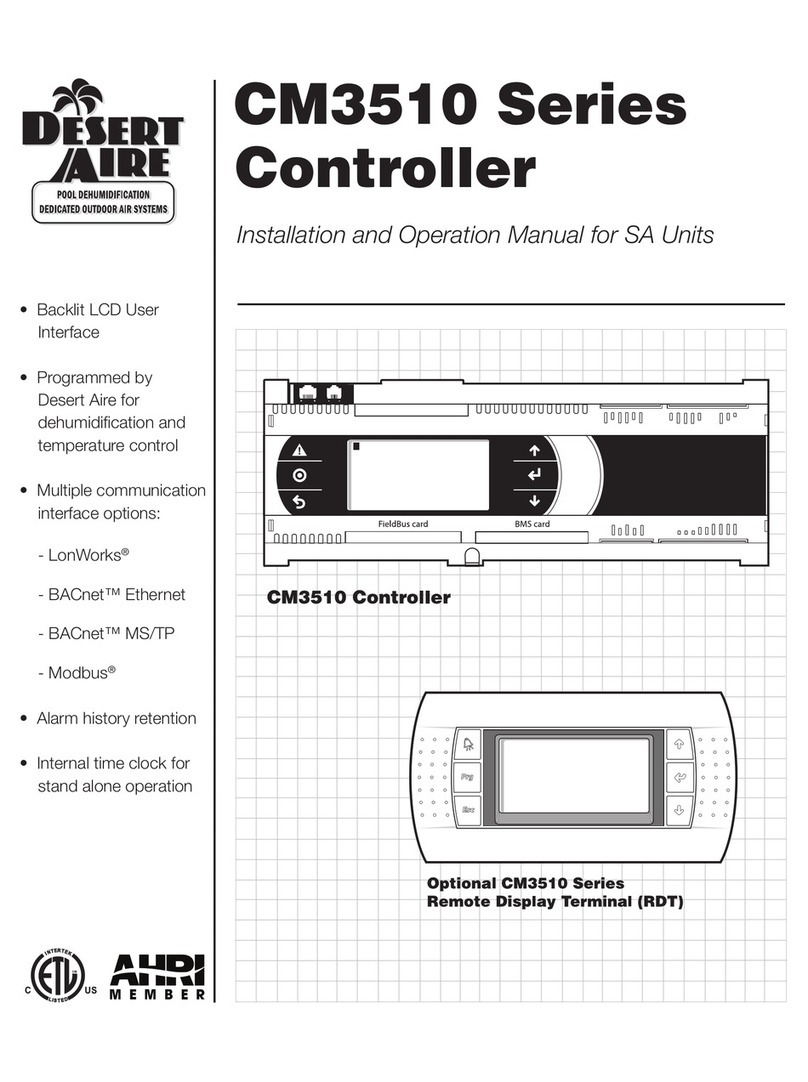
Desert Aire
Desert Aire CM3510 Series Installation and operation manual
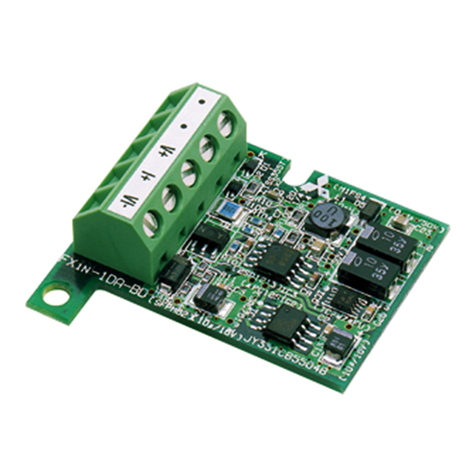
Mitsubishi
Mitsubishi FX1N Series user manual
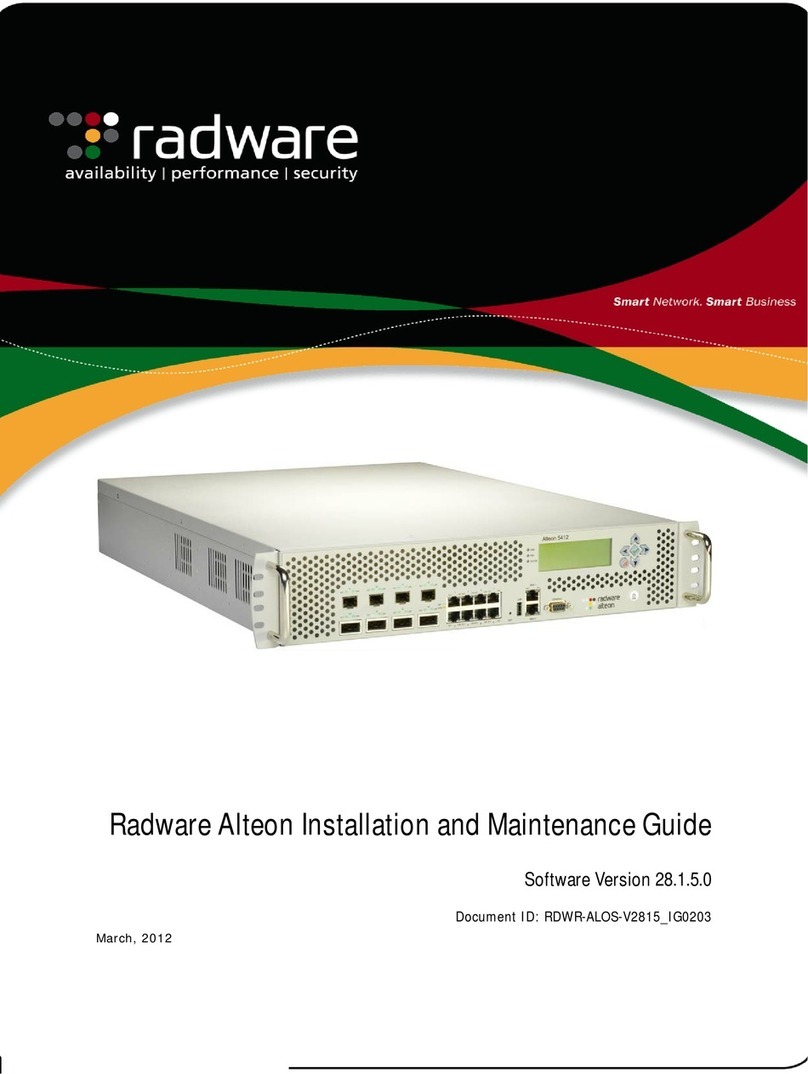
Radware
Radware Alteon Installation and maintenance guide

resideo
resideo Honeywell Home evohome HR92 quick start guide
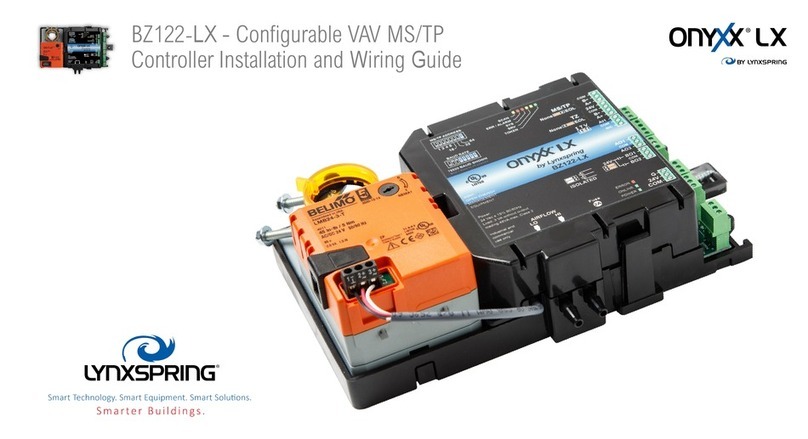
Lynxspring
Lynxspring onyxx LX BZ122-LX Installation and wiring guide
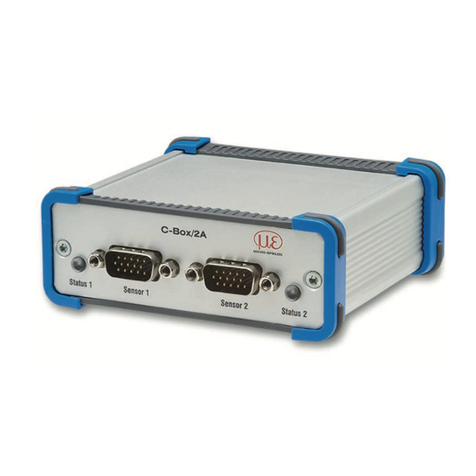
MICRO-EPSILON
MICRO-EPSILON C-Box/2A operating instructions
